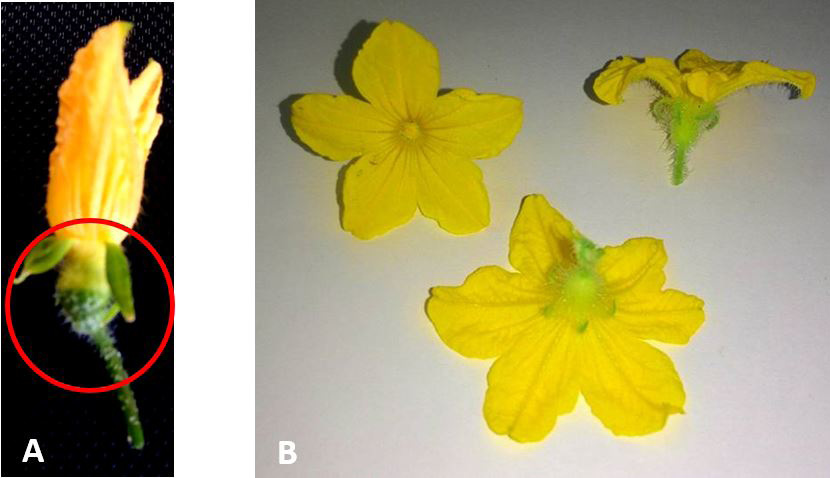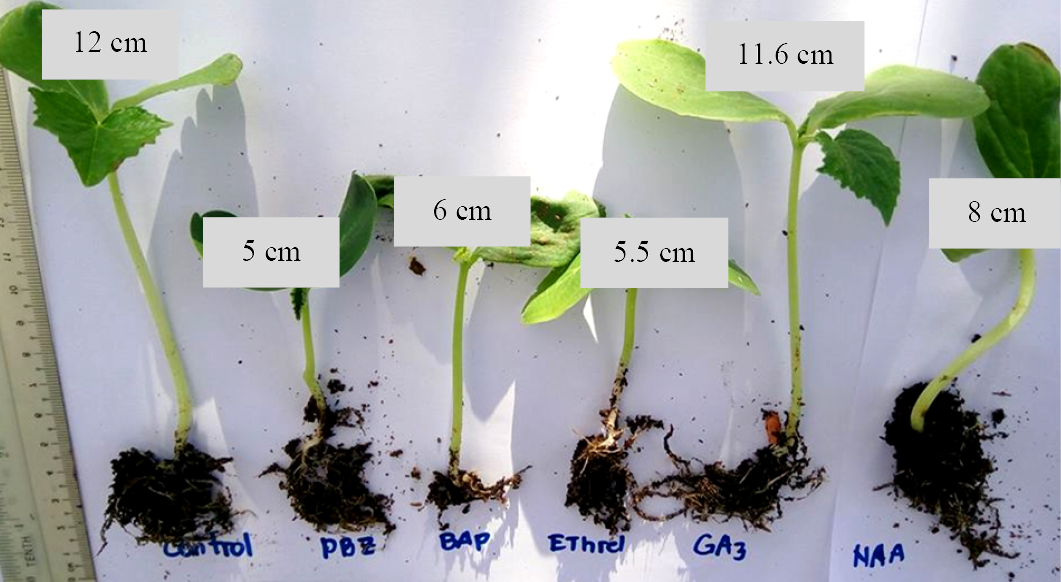Vegetative Growth Characteristics and Flower Sex Expression of Cucumis sativus Affected by Exogenous Application of Plant Growth Regulators
Vegetative Growth Characteristics and Flower Sex Expression of Cucumis sativus Affected by Exogenous Application of Plant Growth Regulators
Getulio A. Barcenas Jr.1* and Luisa Marie I. Barcenas2
(A) Resembles the staminate flower of a cucumber sprayed with ethrel at the cotyledonary stage with a slight modification on its basal part highlighted with a red circle compared to (B) a normal staminate flower of a cucumber without the application of ethrel.
Cucumber seedlings in 4 days after application of different plant growth regulators at the cotyledonary stage. (The cucumber seedlings exhibited varied responses at cotyledonary stage applied with plant growth regulators in which paclobutrazol (PBZ), 6-Benzylaminopurine (BAP), ethrel, application resulted in shorter seedling’s height in average (5,6,5.5 cm long respectively). Seedlings treated with 1-Naphthaleneacetic acid (NAA) showed expanded and bent stems. Gibberellins (GA3) application and control were most likely similar in appearance).









